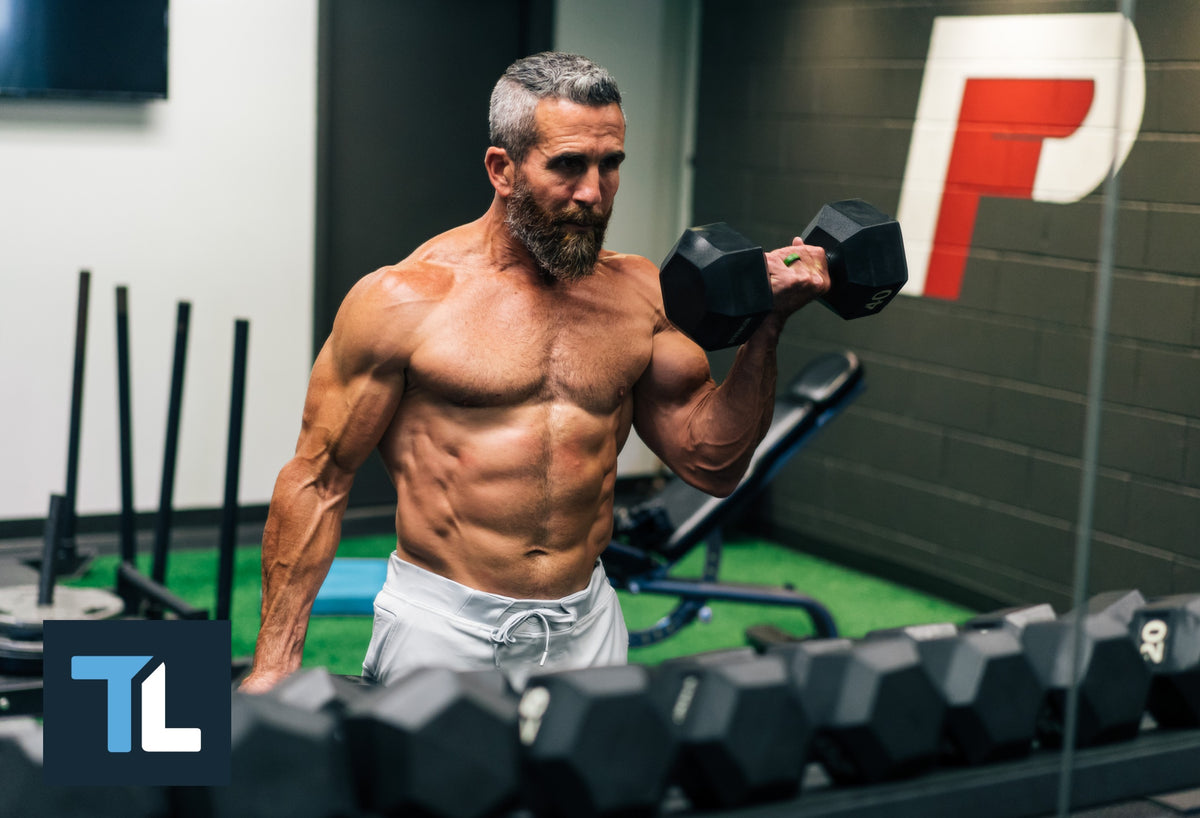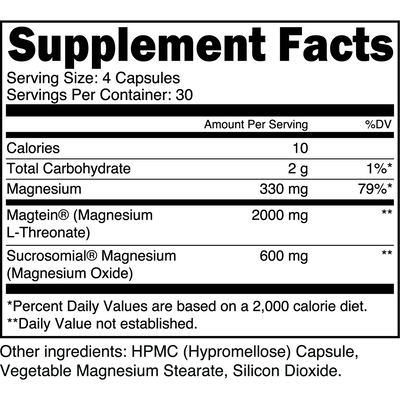Lean Muscle vs. Bulk Muscle: A Comparison for Beginners

It's reasonable to assume that when someone asks how to build "lean muscles" as opposed to "bulk muscles," they're really asking how to gain muscle without adding (significant) body fat. Common "bro-science" would tell you the best way to get a muscular, lean body is to eat "clean" and lift weights, but there's more to it than that.
Bulk muscle, on the other hand, is generally associated with "dirty bulking" diets, where gym-goers and bodybuilders strive to add as much muscle mass as possible without stressing over associated body fat gain.
Nonetheless, the debate over how to build lean muscle vs. bulk muscle presents some ambiguity that we will further clarify in this article. We will also provide insight into why nutrition is the key variable for increasing muscle size and changing body composition.
Lean Muscle vs. Bulk Muscle: Clarifying Terminology
In everyday fitness parlance, the term "muscle mass" is often partitioned into the colloquialisms "lean muscle" and "bulk muscle," each of which may be misconstrued since they lack clear definitions from a scientific perspective. Muscle tissue is "lean" by virtue of it being distinct from fat tissue, also known as "adipose," and contains relatively low amounts of fat compared to other body tissues. As such, the expression "lean muscle" is somewhat akin to saying "solid ice" ("ice" implies water that's in a solid phase).
However, skeletal muscles can become less lean as a result of aging and being overweight/obese. Body fat tissue (i.e. adipose tissue) that surrounds/engulfs skeletal muscle tissue can infiltrate muscle cells, causing an accumulation of intramuscular triglycerides that may have metabolic and aesthetic ramifications [1].
Setting aside the semantics, "lean muscle" development implies the growth of muscle mass without a commensurate increase in body fat percentage. Some people may even hope to lose fat when building lean muscles—a process known as body recomposition.
In contrast, adding "bulk muscle" typically means an increase in muscle mass and body fat, making the muscles appear even larger. Bulky muscles are what you would expect to see on a bodybuilder during their offseason since they have a higher body fat percentage and more muscle mass before starting their next contest prep.
But here's the catch: Whether your goal is to build lean muscles or bulky muscles, resistance training is imperative to stimulate muscle hypertrophy, which is the scientific term for "muscle growth." The primary variable is not necessarily how you approach strength training, but how you eat (we'll expand on this point later).
Body Fat Is What Makes Muscles Appear "Bulky" or "Lean"
When someone has a higher body fat percentage and a significant amount of muscle mass, their body composition is considered "bulky." Likewise, having a lower body fat percentage and a significant amount of muscle mass would classify as "lean and muscular." (The chart below depicts how the body appears with differing levels of muscle mass and body fat.)

Bulky muscle appears less "toned" due to body fat content. Someone with a lean physique may have a lower muscle mass index than someone with a bulky physique, but the former can still look quite muscular since muscle tissue is more dense than adipose tissue.
As such, having low body fat is a requisite for displaying all the lean muscles you've developed. No matter your body type, excess fat tissue will dampen the "wow" factor of big muscles. This is not to say that bulky muscles aren't impressive, nor that someone with a bulky physique is less physically imposing than an individual with a lean/toned body (if anything, having bulky muscles makes most people look stronger than having leaner muscles).
"Bulking" vs. "Cutting": Where Should You Begin?
The journey towards your dream physique often leads to a pivotal crossroads: the decision to either "bulk up" by gaining muscle mass or "cut down" by shedding fat. For those relatively new to resistance training and the broader fitness landscape, this choice can seem daunting, complicated, and like a catch-22.
Fortunately, it's actually quite straightforward for those who don't have much experience pumping iron:
Step 1—Assess Your Starting Point
First things first, take a hard, honest look at yourself in the mirror. Are you carrying a significant amount of body fat that might be masking the muscle underneath, or do you find yourself on the leaner side, looking to build muscle mass and fill out your frame?
Your current body composition plays a crucial role in determining which direction to take. For individuals with a higher body fat percentage (males >20%; females >30%), cutting is prudent to help improve muscle definition and overall health. A proper weight-loss diet coupled with resistance training will help you retain and proportionally increase your lean body mass (i.e. improve your body composition).
Conversely, for those who have a relatively lean body but lack muscle mass, a bulking approach will provide the necessary caloric surplus to fuel muscle growth. While this may lead to a modest amount of fat gain, don't worry about it; you can always lose weight down the road—turning those "bulk muscles" into leaner muscles.
Step 2—Emphasize Resistance Training, Not Cardio
Whether you choose to bulk or cut first, resistance training should be the cornerstone of your workout regimen. Many beginners make the mistake of emphasizing cardio in the early phases of their fitness journey to burn calories, hoping it will translate to a ripped, lean physique.
Doing too much cardio—even during a cutting phase—will eat away your lean body mass, ultimately hampering your metabolic rate (since muscle tissue is advantageous for increasing energy expenditure) and likely leading to the dreaded "skinny-fat" look. You'll also be sacrificing a prime opportunity to capitalize on "newbie gains," a phenomenon of exponential muscle mass increases and body recomposition that occur in the first few months for newcomers to strength training.

Moreover, overweight people are often able to simultaneously lose fat and build muscle without doing much cardio during the initial "newbie gain" phase (assuming proper nutrition/calorie intake and diligent training).
Step 3—Eat Plenty of Protein, But Pay Attention to Overall Calorie Intake
Odds are you've heard plenty about the importance of eating ample protein when muscle-building is the goal. However, most gym-goers focus too much on protein intake without considering the greater impact of overall calorie intake.
The body requires more energy to build muscle than it does to lose weight; hence, bulking entails eating a caloric surplus (i.e., ingesting more calories than you burn) to support muscle growth. Likewise, cutting means you'll have a slight caloric deficit (i.e., burning more calories than you consume) to preserve muscle mass and lose fat.
In both cases, protein is indeed your ally, supporting muscle synthesis during a bulk and helping retain muscle during a cut. But you probably won't need more than 0.8-1.2 grams of protein per pound of body weight (1.8-2.6 g/kg body weight) per day to optimize muscle growth/retention [2]. If you're not used to eating a generous amount of protein, supplementing with protein powder is a simple, effective way to increase your intake.
The rest of your calories should come from wholesome, nutrient-dense fat and carb sources, such as avocado, nuts, olive oil, sweet potatoes, oats, quinoa, and rice.
Step 4—Listen to Your Body and Track Progress
As you progress, monitor how your body responds to your training and nutrition strategy, and don't be afraid to make changes. Fitness is a personal journey, and what works for one individual may not work for another. Regular assessments, whether taking progress pictures or weighing yourself daily, will ensure you remain on the path that aligns with your evolving goals.
Key Takeaways
While the terms "lean muscle" and "bulk muscle" are rooted in common gym lore rather than strict physiology/scientific context, they represent two distinct outcomes of body transformation. Deciding whether to bulk or cut first comes down to a combination of your current physical state, your ultimate fitness goals, and a bit of strategic planning.
Remember, there's no one-size-fits-all answer, and the journey is as important as the destination. Whether you start by building a solid muscle foundation or by leaning down to reveal the fruits of your labor, each phase of your fitness journey brings its own rewards and learning experiences. Welcome each stage with open arms and a commitment to self-improvement, and you'll find success in whichever path you choose.









